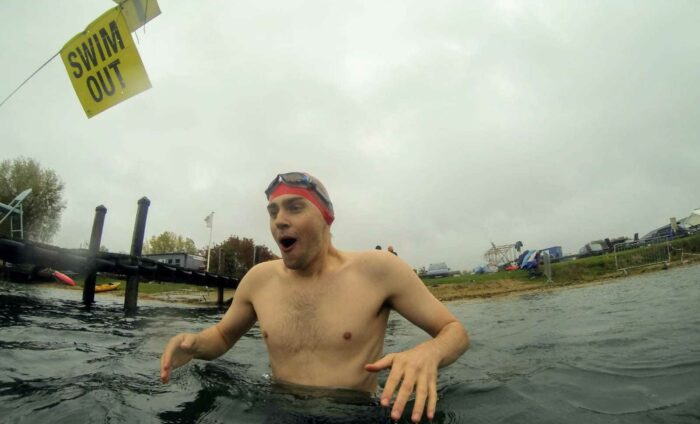
How to acclimatise yourself to cooler water
Before we had swimming pools, everyone one swam outside. After generations of plodding up and down between lane ropes we’ve been conditioned to think swimming in tanks is normal. But it’s not. Now, thousands of people are rediscovering the joys and freedom of swimming outside in natural bodies of water. One thing swimming pools have going for them is that they are controlled and safe environments. When you venture outside, it’s different. You can’t leap unthinkingly into your local river as you might into a pool. You’re back in nature. Which is fabulous, but you need to respect it. The more you know, the safer you’ll be.
Water temperature
Compared to indoor heated swimming pools, which vary in temperature from around 26 to 31 degrees Celsius, you are likely to be exposed to a much wider range of temperatures when swimming outside. In the UK, inland waters can be as low as zero in winter to as high as the mid 20s in peak summer. Coastal waters vary from low single digits to the high teens. The water temperature has a massive impact on how you swim and how long you can safely stay in the water.
The secret to acclimatising to cooler water is to swim in it. Try to swim outdoors at least once a week, and preferably two or three. As you become more acclimatised you can extend the length of time that you stay in the water. Listen to your body and get out if you feel uncomfortable or start to feel cold. If you want to swim through the winter, start your acclimatisation in summer and just keep swimming through the autumn.
The risks of cold water
For the inexperienced, the biggest danger from sudden immersion in water that’s significantly cooler than you’re used to is cold water shock. This is the body’s initial and automatic response to rapid change in skin temperature. It causes, among other things, a sharp intake of breath, an increase in breathing rate and an increase in blood pressure. It typically lasts up to a couple of minutes. For the unwary, cold water shock can be deadly, especially if that sharp intake of breath occurs under water. In addition, if you have an underlying heart condition or hypertension then the sudden change in blood pressure may cause complications. Therefore, enter the water slowly and keep your face clear until your breathing is under control. The cold water response decreases with swimming experience and being mentally prepared.
The second problem with cold water is that it can result in swim failure. To protect vital organs in the core, the body restricts blood flow to the limbs when in cold water. If this reaches extreme levels the arms and legs no longer function properly and you can’t swim. If you feel yourself slowing down or struggling to swim, get out.
The next risk is hypothermia. This occurs when you suffer a drop in core body temperature and can eventually lead to loss of consciousness and heart failure. The amount of time you can swim in cold water without suffering from hypothermia is determined by the temperature, your body size and shape and your experience, among other factors. Start with short swims to learn what your limits are. Always swim with other people. If your stroke rate slows down or you start to shiver, get out and warm up.
It’s not over when you get out
When you finish swimming, you also need to concern yourself with something called ‘after drop’. This happens when you exit the water and cool blood from extremities starts circulating through your body again, lowering your core temperature, which is why you often start to shiver a few minutes after you finish swimming. To minimise the risk, dress immediately starting with the top half of your body. Put on a hat and gloves and have a warm (non-alcoholic) drink.
A wetsuit will not prevent cold water shock nor stop you from suffering hypothermia. However, it will help you to stay warmer for much longer, keep you afloat and, in most cases, allow you to swim faster.
Also bear in mind that the water near the surface, especially on hot sunny days, can be much warmer than the water below.
Top tips for staying safe in open water
- Think before you swim. Check your entry and exit points and take into account currents and tides
- Don’t mix swimming and alcohol
- Swim with other people – ideally that know the area and have swum in open water before
- Don’t jump in. Enter the water slowly to prevent ‘cold water shock’
- Let people know where you are and what you’re doing (e.g. inform beach lifeguards or even the coast guard if planning a long coastal swim)
- Make sure you’re visible in the water. Wear a brightly coloured cap and consider using a tow-float
- If someone gets in trouble, don’t put yourself at risk but call for help – dial 999 or 112
- If you find yourself in difficulty FLOAT TO LIVE








